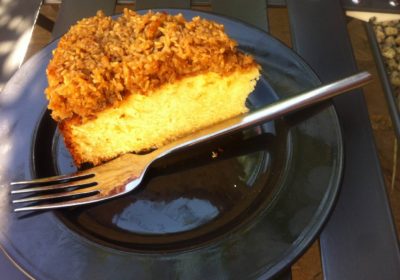
Families have fallen out over far less, but the border wars between the counties of Cornwall and Devon over who invented the pasty and the correct location of the ‘crimp’ are taken perhaps more seriously than sporting or political allegiance. It could be an overstatement, but it certainly causes Cornish cheeks to flush at the suggestion it could have come from anywhere else.
Indeed, the Cornish Pasty itself, with the crimp – the twisted seal of the two edges of pastry – safely along the side of the pasty, is a recognised regional product. The Devon Pasty goes for a crimp on the top, so a completely different prospect entirely. Beyond the debate, there’s no doubt that a pasty goes beyond legend, with the traditional steak pasty providing sustenance for a whole day’s work, with tin miners disappearing underground with their pastry-wrapped sustenance in days now long gone. Their initials, applied in pastry to the stodgy corner of lesser-filled pastry, allowed them to tame the devil by throwing it into the dark, inaccessible corners of the mine where evil dared to lurk.
Shortly before Cornish Pasty Week (Sun 24 Feb – Sat 2 Mar 2019) gets underway and the winner of the coveted World Cornish Pasty Championship is crowned on the final day, the Cornish Pasty Association give Dough Culture permission to publish their definitive recipe for the pasty that has kept a whole county alive for centuries before, travelling the world as the original, and still one of the very best, fast foods.
For the pastry it is important to use stronger flour than normal as you need the extra strength in the gluten to produce strong pliable pastry.
Details
- Preparation Time: 05:00
- Servings: 6
Ingredients
- For the pastry:
- 500g strong bread flour
- 120g lard or white shortening
- 125g Cornish butter
- 1 tsp salt
- 175ml cold water
- For the filling:
- 400g good quality beef skirt, cut into cubes
- 300g potato, peeled and diced
- 150g swede, peeled and diced
- 150g onion, peeled and sliced
- Salt & pepper to taste (2:1 ratio)
- Beaten egg or milk to glaze
Preparation
- 1Add the salt to the flour in a large mixing bowl. Rub the two types of fat lightly into flour until it resembles breadcrumbs.
- 2Add water, bring the mixture together and knead until the pastry becomes elastic. This will take longer than normal pastry but it gives the pastry the strength that is needed to hold the filling and retain a good shape. This can also be done in a food mixer.
- 3Cover with cling film and leave to rest for 3 hours in the fridge. This is a very important stage as it is almost impossible to roll and shape the pastry when fresh.
- 4Roll out the pastry and cut into circles approx. 20cm diameter. A side plate is an ideal size to use as a guide.
- 5Layer approx. a sixth of the vegetables and meat on top of the pastry, adding plenty of seasoning. Bring the pastry edges together, brushing the edge with a little water and 'crimp' the together - this is a distinct 'pinch and twist' technique, with one hand's thumb and index finger pulling the underside of the pastry up and over the seal a couple of centimetres at a time. The other hand's thumb and index finger works alongside to do 'the pinch' to seal, working along the edge to form a decorative, twisted fastening.
- 6Glaze with beaten egg or an egg and milk mixture.
- 7Bake at 165 degrees C (fan oven) for about 50 – 55 minutes until golden.







